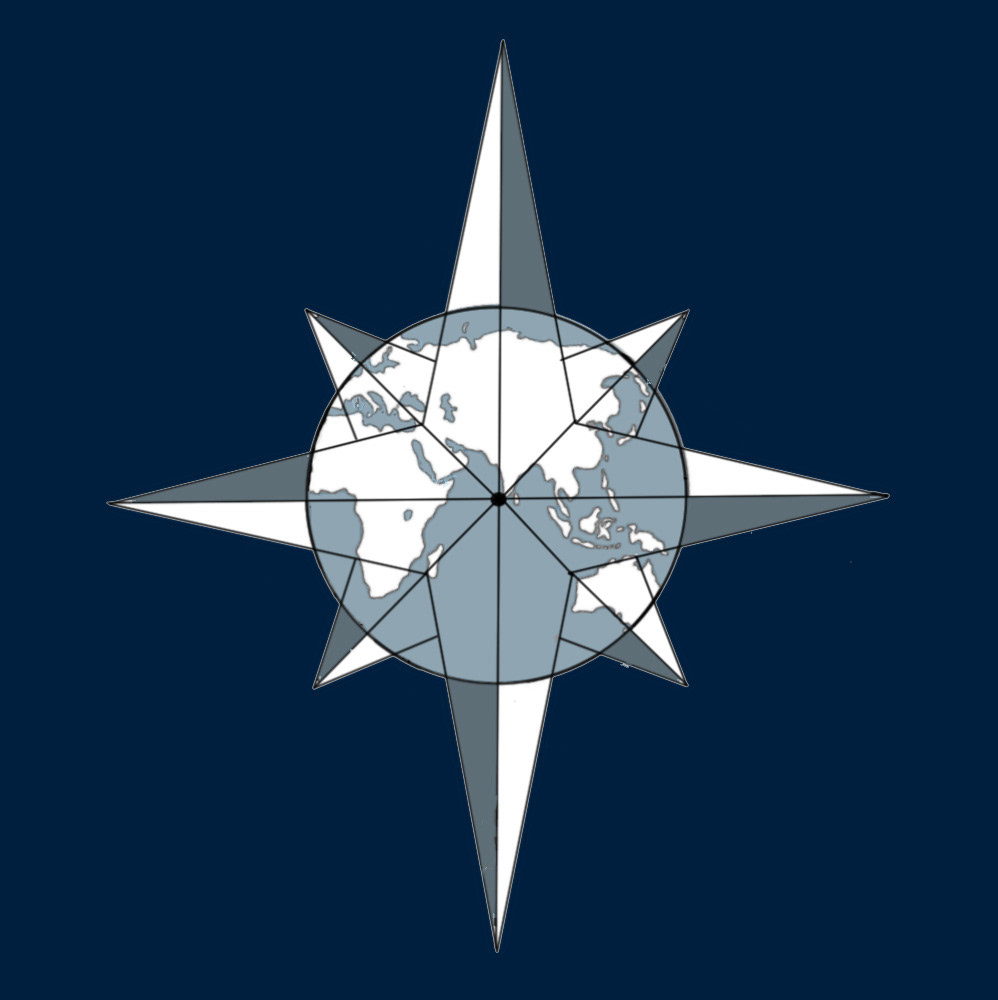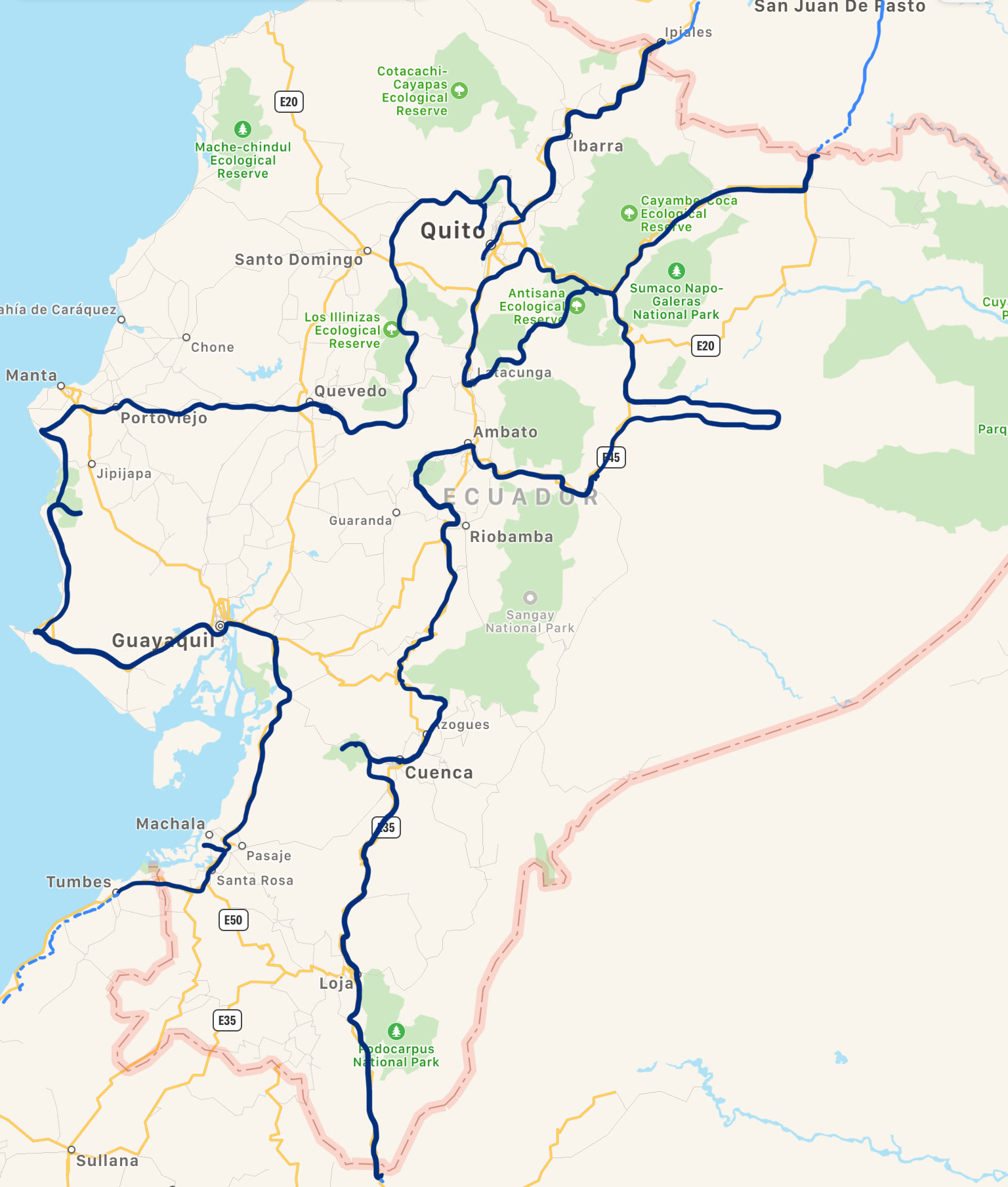

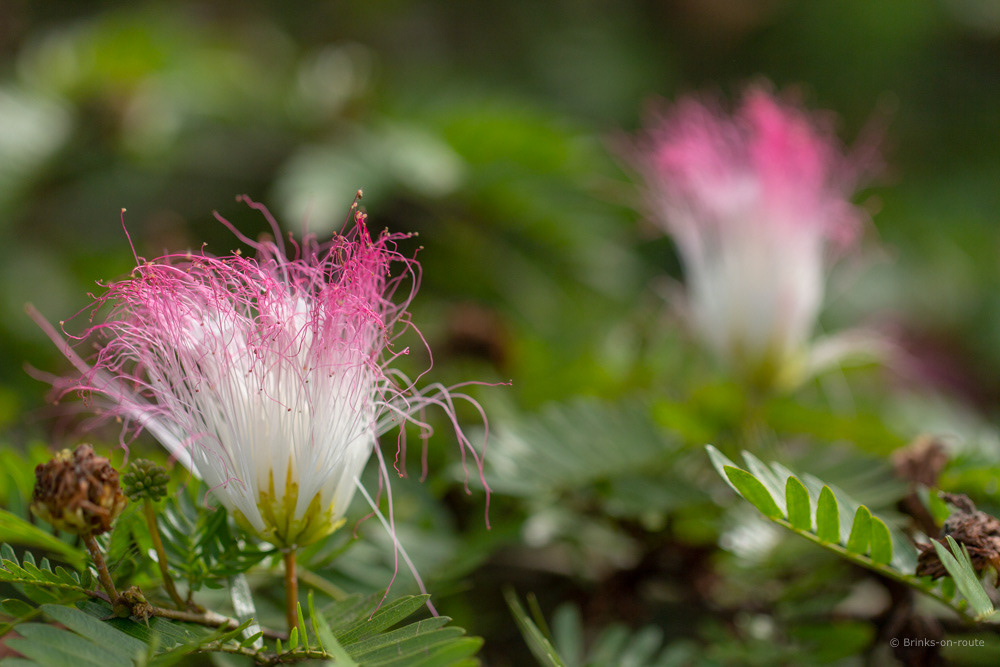



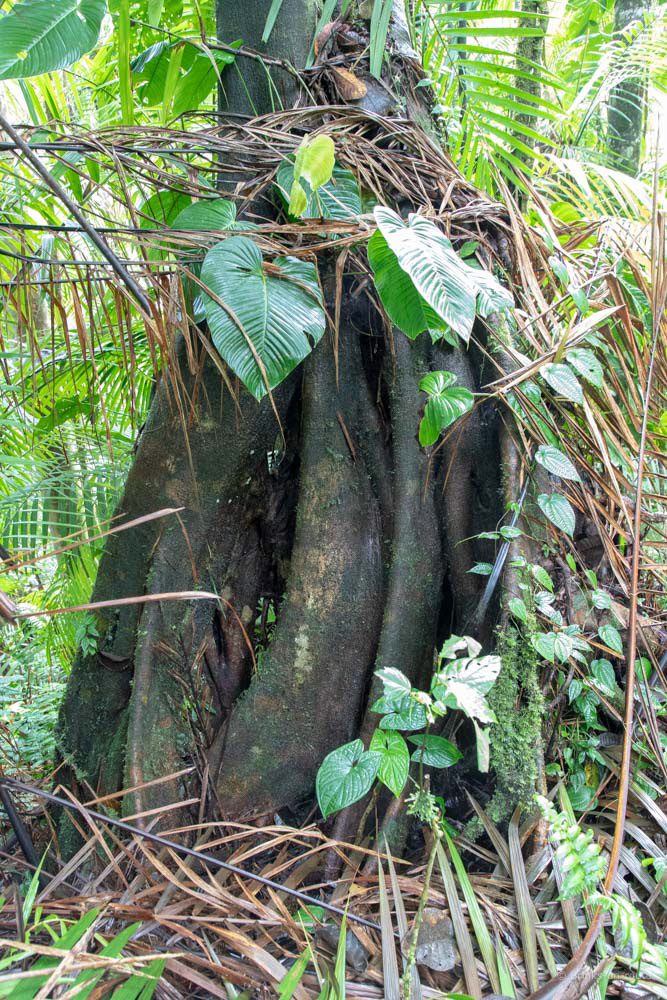

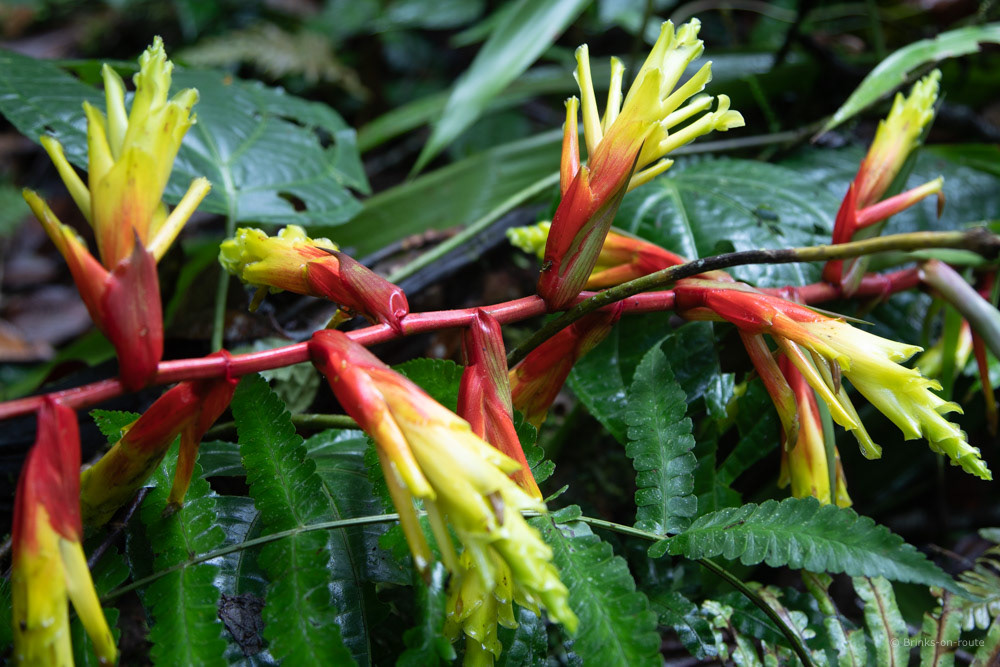
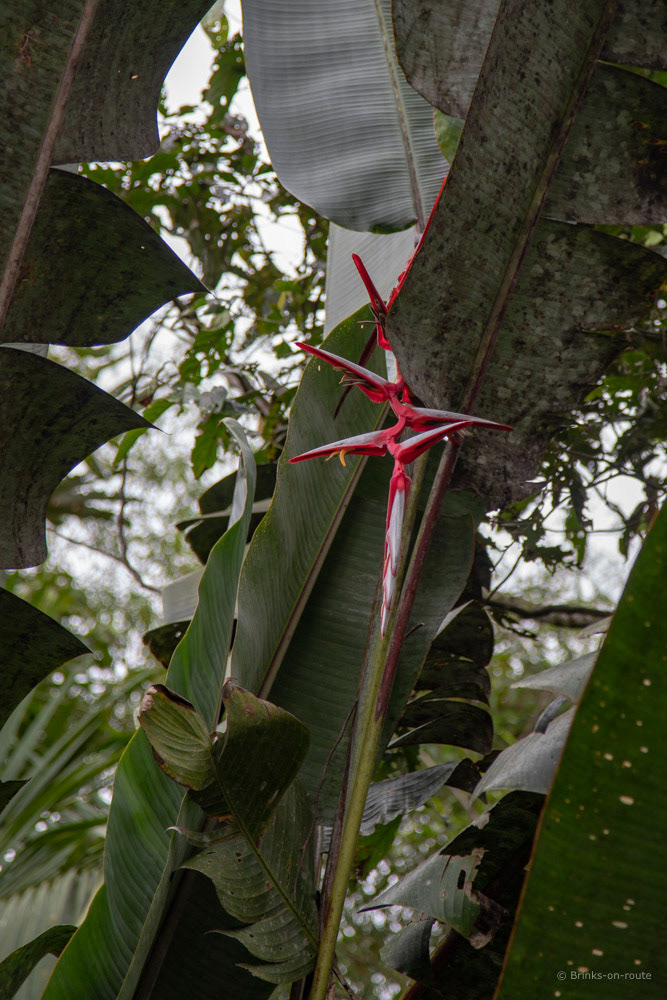
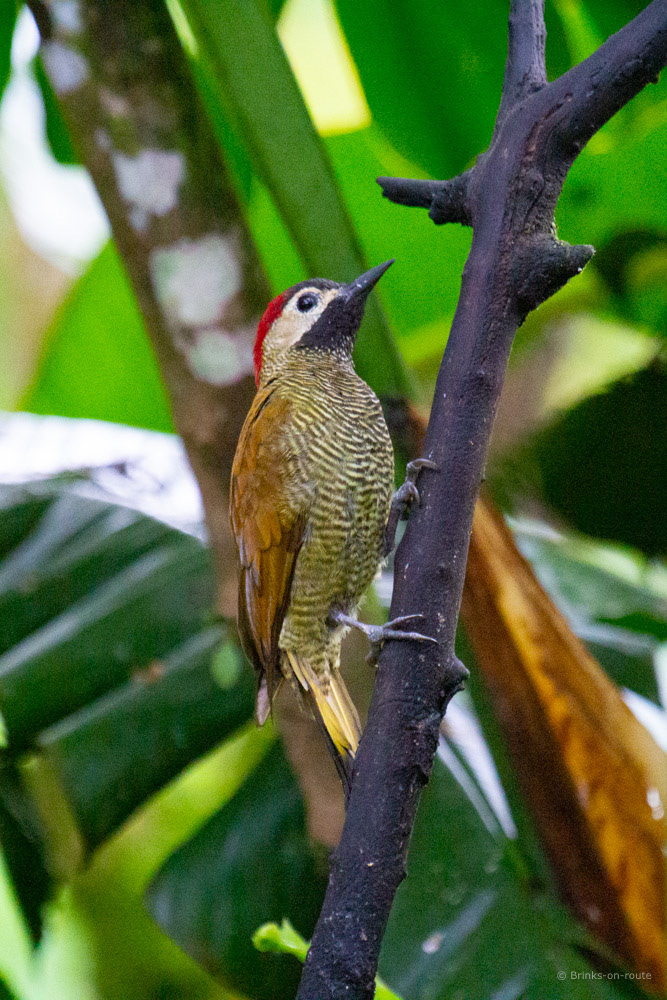

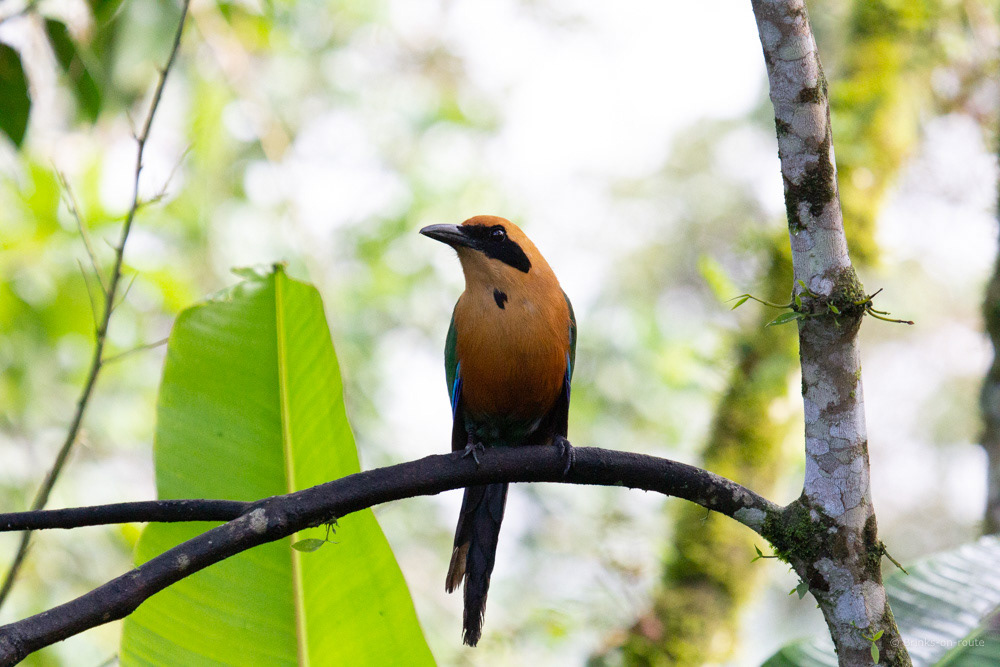







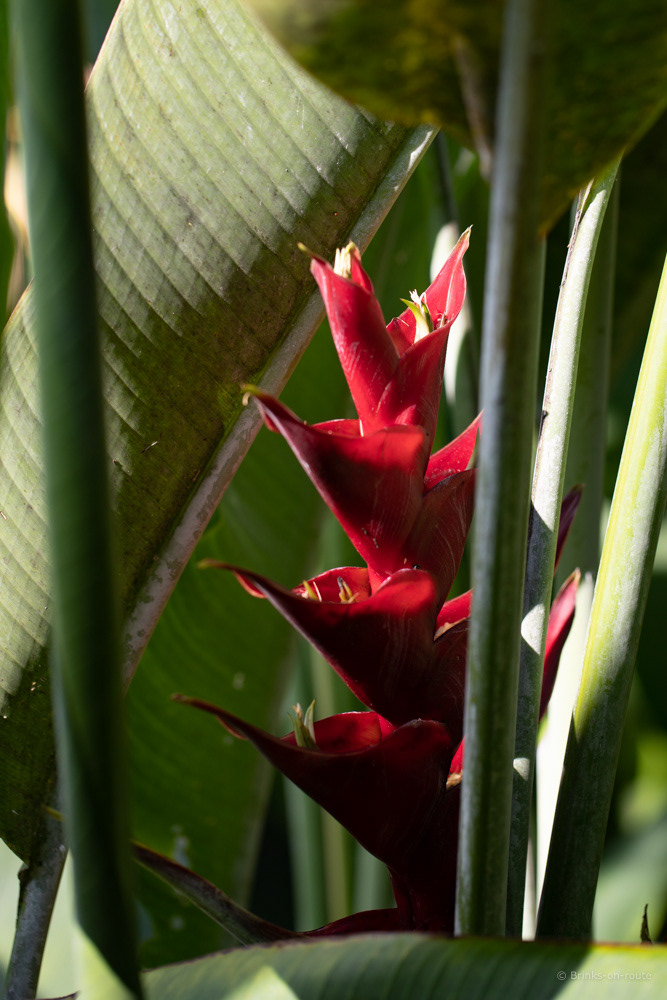


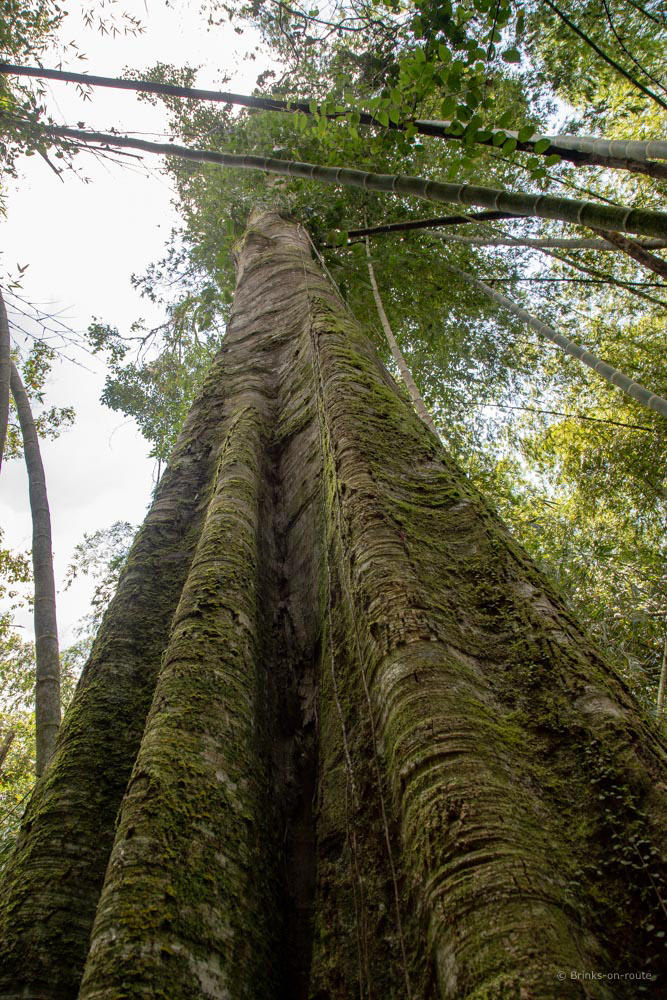


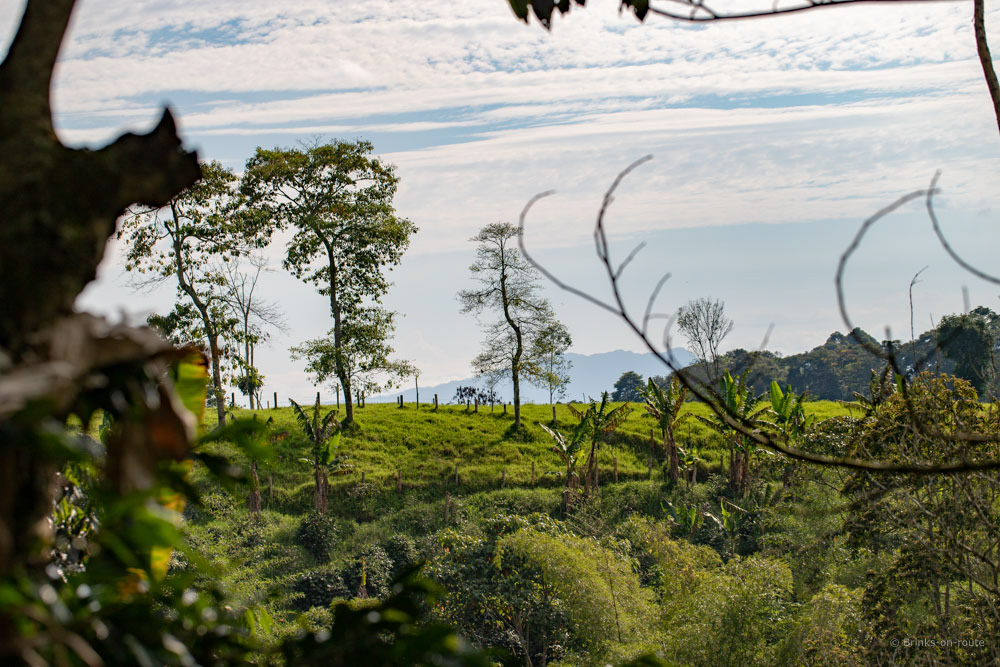




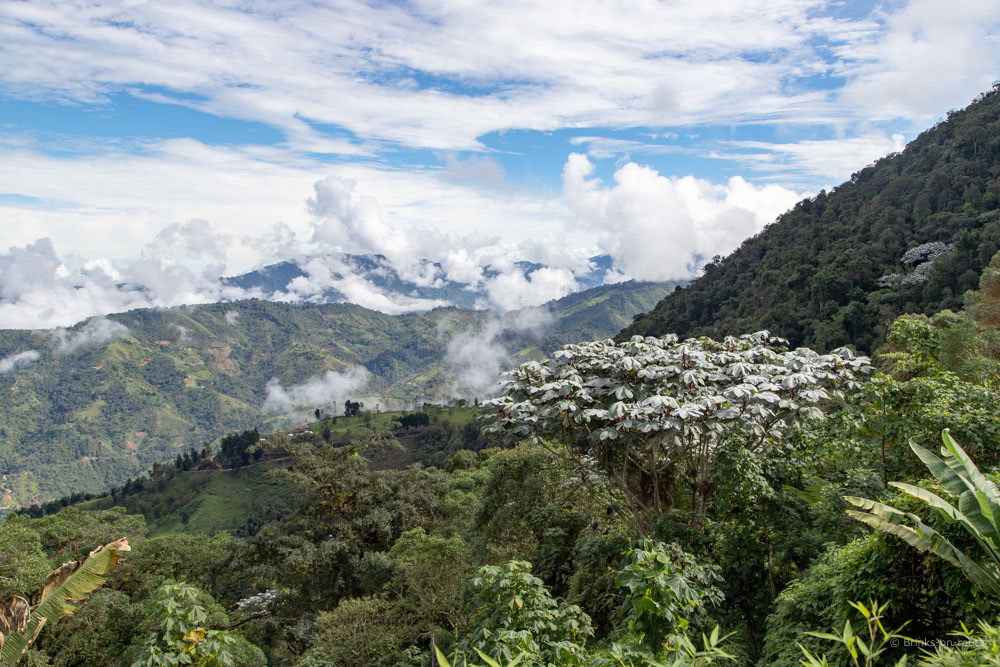
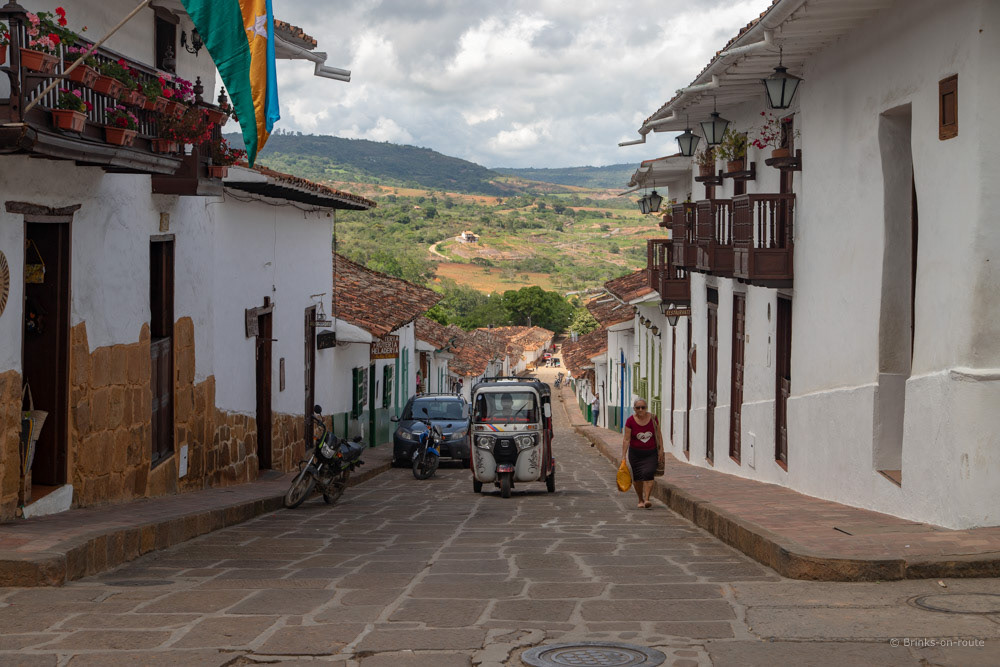
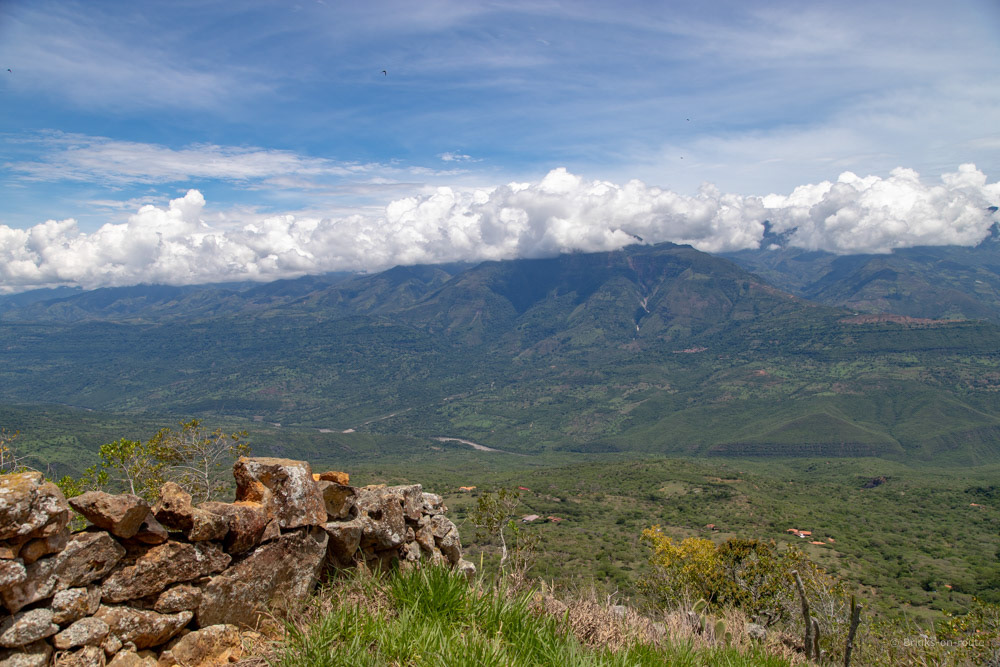


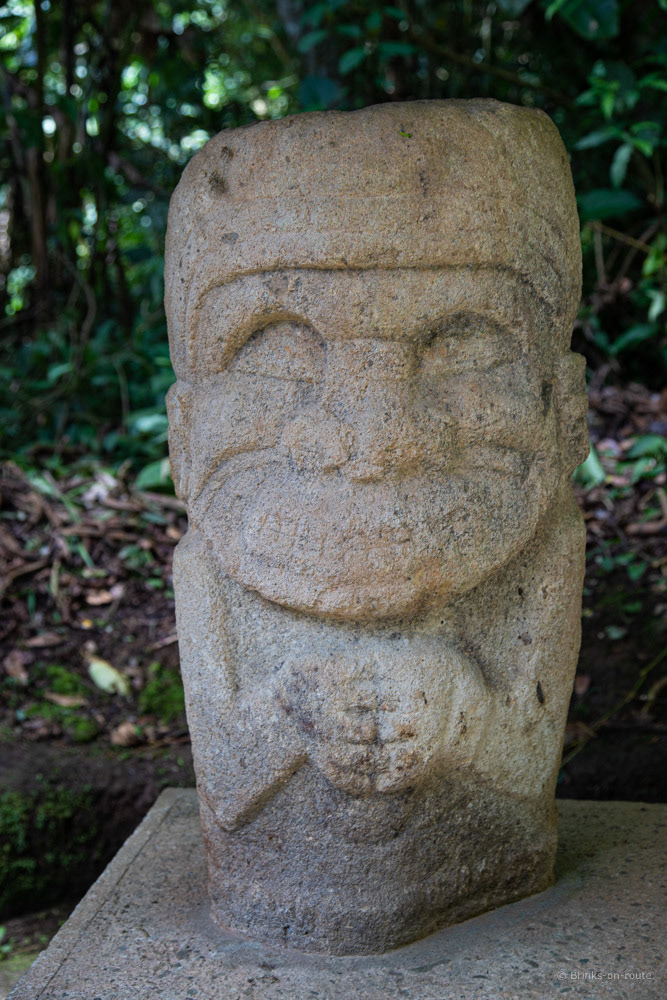
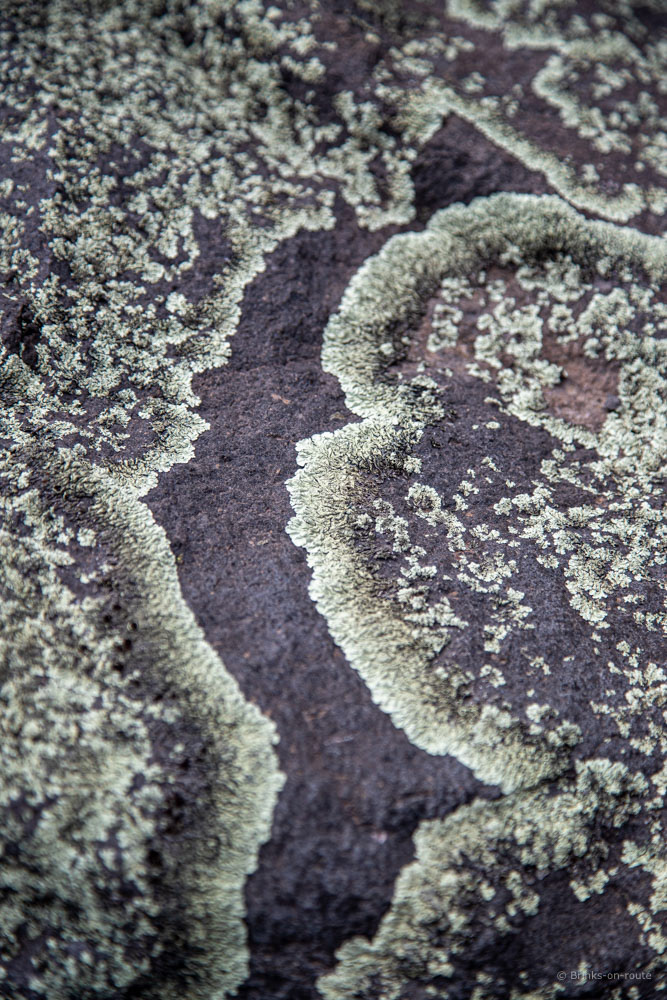



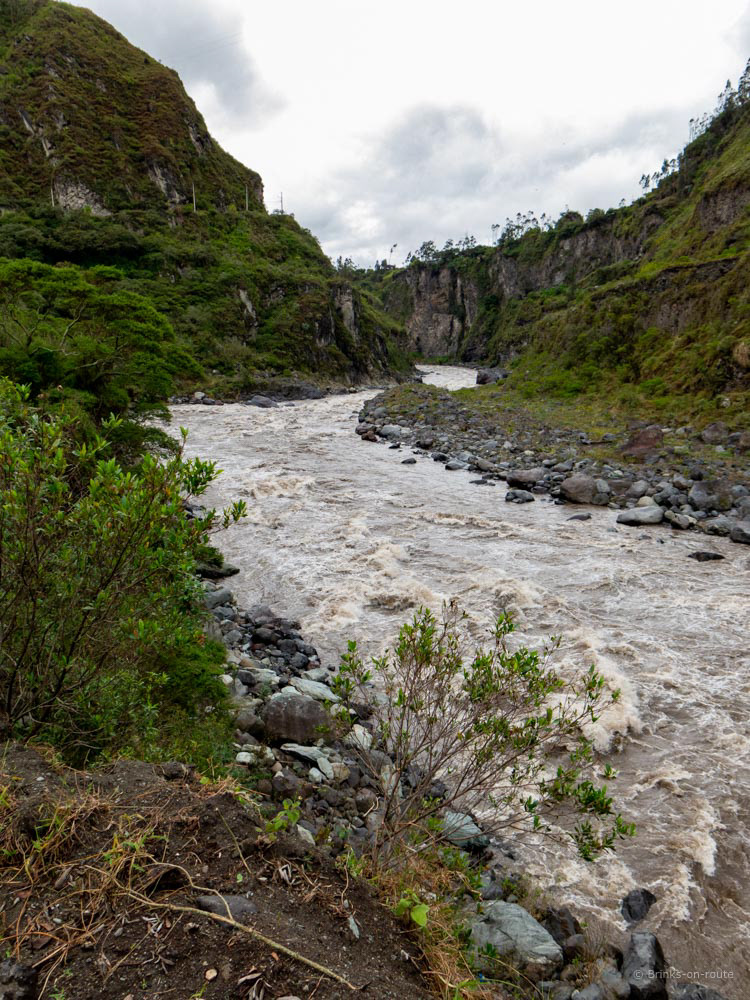


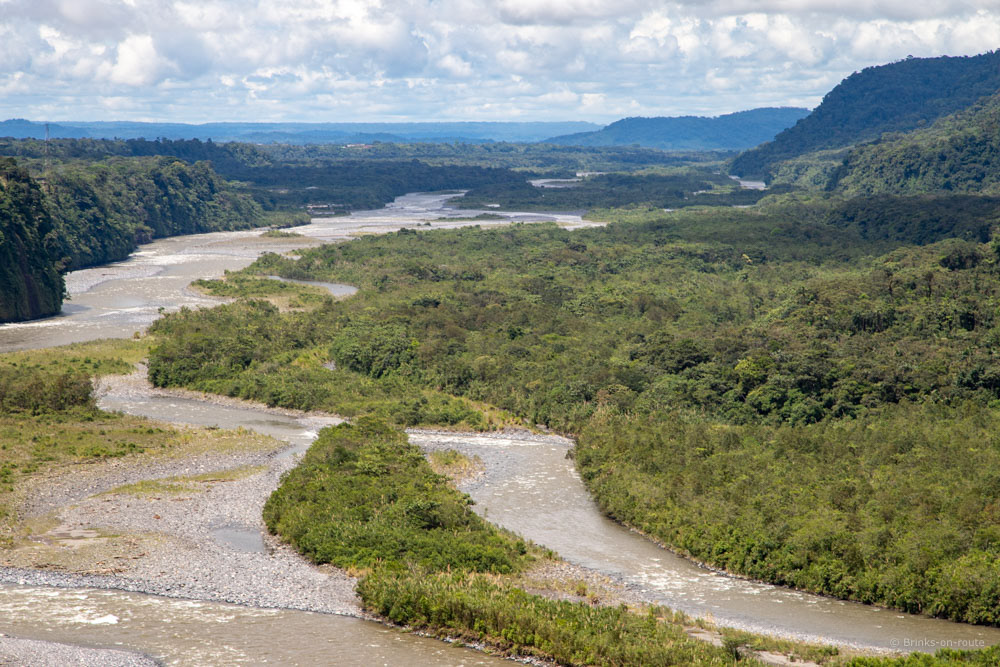
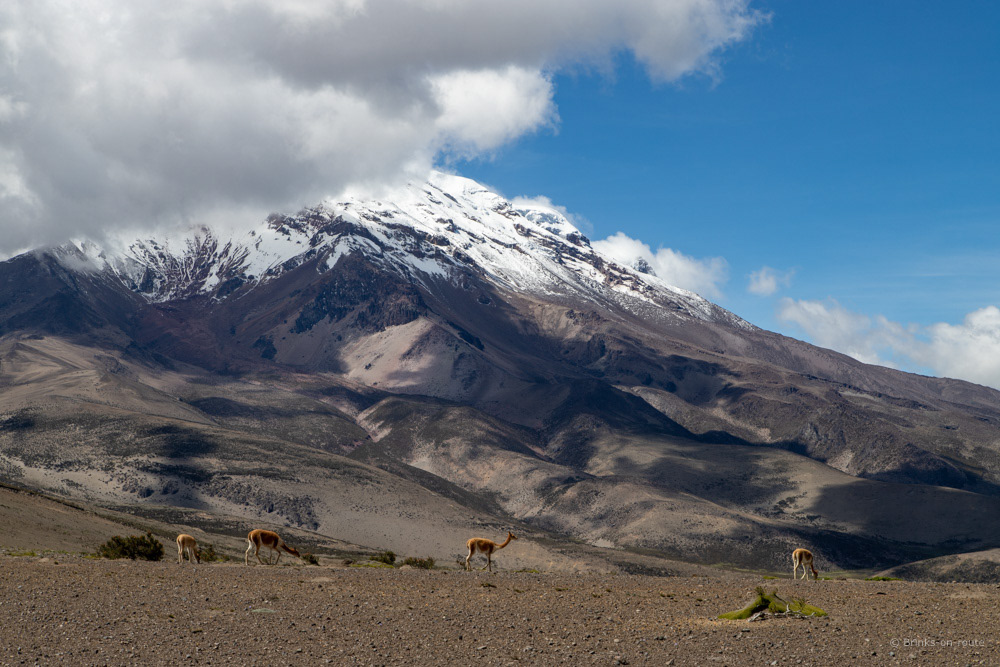
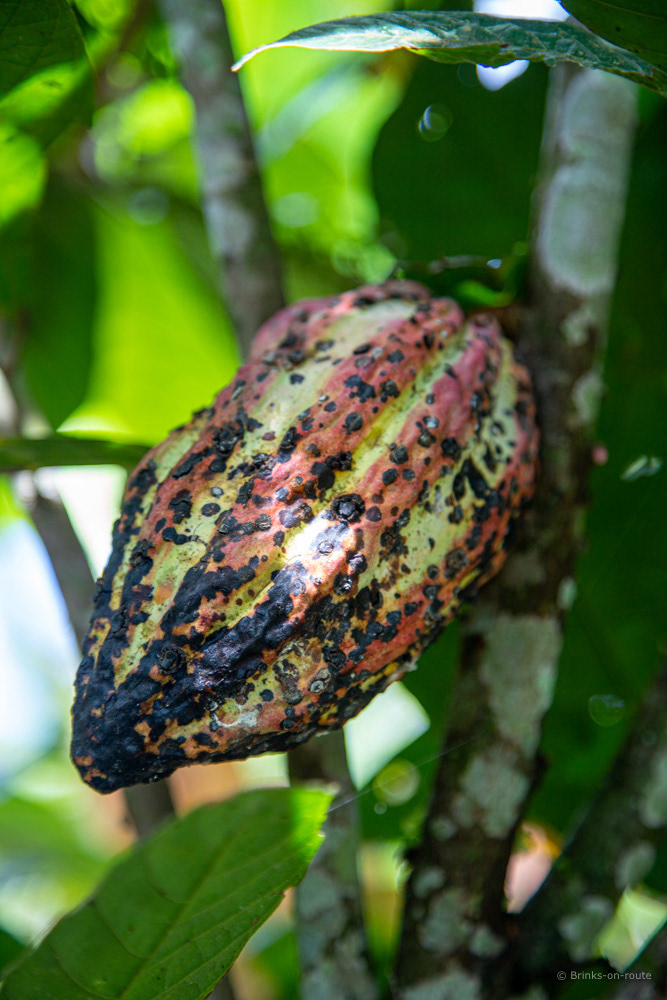




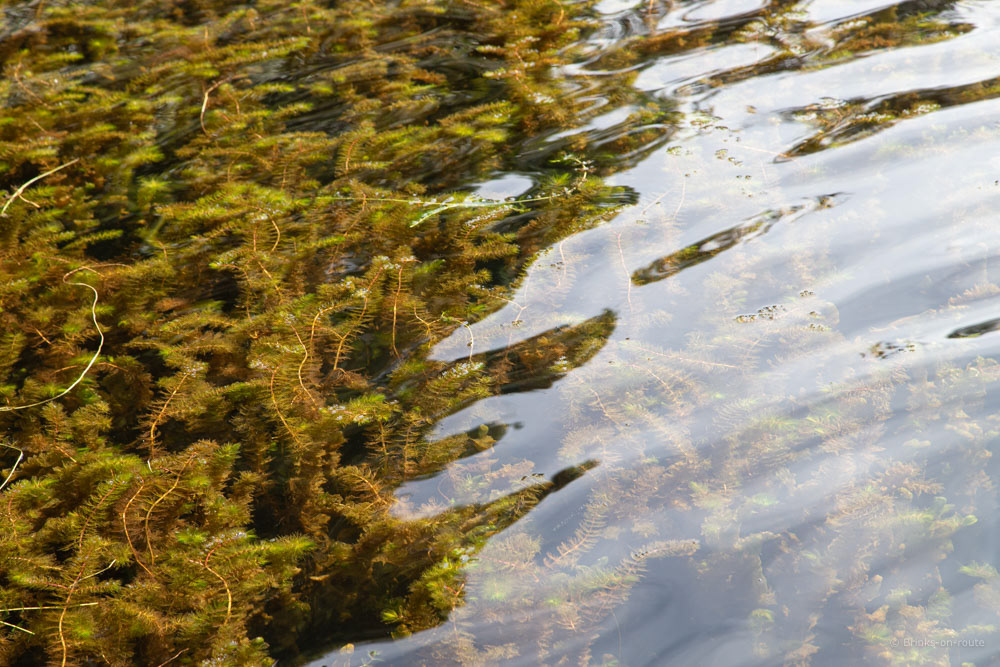
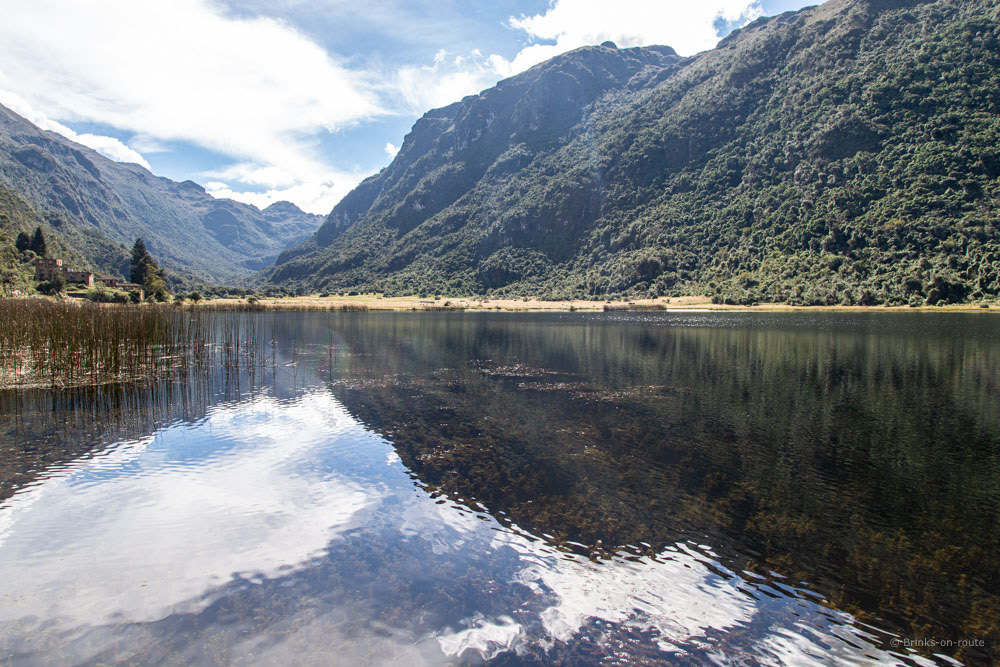


Ecuador and Colombia are not the countries that were in our first rough planning. But we hear so many good stories about both countries and since we are in the area ...
Completely unprepared and without any idea what we can see and experience we drive into Ecuador.
As soon as we cross the border between Peru and Ecuador, the landscape changes drastically. The hills and forests make it a lot less boring.
The exuberant nature offers a home to many birds, monkeys, agoutis and other animals. Unfortunately also mosquitoes. The temperature on the coast is just like in Peru: hot but with a higher humidity.
After a few days on the coast we, including Cateau, are a bit tired of the heat and we go inland. The road winds through the mountains and after a while we are above 2000 meters and the temperature is a lot more pleasant. We are in the Andes again. Volcanoes show up again.
Mindo is known as a hotspot for birds. This would be the place with the greatest biodiversity of species of birds.
We are in the national park. Although it is forbidden for dogs, an exception is made for Cateau. "as long as she doesn't bark". This is due to the animals that live there. Cateau's hunting instinct is not stimulated by the native animals, but by the chickens walking around. We make beautiful walks through the cloud forest. Unfortunately we don't see monkeys, bears or pumas.
The owner is very friendly. From her veranda we can spot birds and get coffee with fried banana. She ask if Cateau still had food and if we needed more. On departure we receive a jar of homemade jam.
Because we have heard good stories about Quito, we decide to spend a few days there.
We sleep in a small hotel where the car fits exactly in the garage. And by exactly I mean exactly. The roof has just one centimeter clearance and we can only squeeze in through the driver's side. But hey, he's safe. It is therefore quite a happening when we leave. We also receive mandarins for the road. Very nice and helpful people.
The border crossing between Ecuador and Colombia is chaotic and very busy. Refugees from Venezuela are everywhere with all their possessions. Although this is often no more than a few bags. We expected to spent a lot of time crossing the border here, but luckily things are going pretty smoothly and after 2 hours we are on our way again.
In the hills south of Cali we spend the night with Kika and Anouar a Moroccan couple who settled here with their 3 children. We are immediately invited for lunch and a special conversation with a glass of wine in the evening. The house, including an escape tunnel, is from a former big boss of the Cali Cartel.
The border area is not well known. In Ipiales we have to take out our car insurance and get money. But the atmosphere is a bit unsavory. We continue our way north as quickly as possible.
Not a good place to linger.
We land on a coffee plantation. Javier tells passionately about his organically grown coffee. His big hobby is collecting Heliconias. He has a huge variety of varieties.
It appears that our 200th travel day coincides with the Colombian national bird count day. There are 3 biology students on the site of Javier and Anna bird counting and we are allowed to come. Although we really enjoy watching birds, it appears that our interest lies somewhere else than with the 3 gentlemen. It fell into complete ecstasy when they saw a small brown bird. Give us toucans and other colorful birds.
We make a small stop in Salento. It is a small village in the mountains with colorful houses.
From here we drive to Manizales. We have found a "camping" via I-overland. On arrival it appears to be no camping at all. But we are more than welcome. We are immediately pampered by Patricia. Coffee in the afternoon and when you wake up. We get pounds of fruit. Bananas too, but when I say I don't know how to prepare them, they are ready to eat on a plate for half an hour. Patricia is a wonderful hostess and it is a shame when we move on.
We drive via the Pan Americana to Medellin. A stretch of less than 200 km, due to all road closures and busy traffic, it takes 6 hours. It is already dark when we rush into Medellin.
The campsite is outside the city but the city is easily accessible via the cable car. Also gives a good view of the city. It is not beautiful.
In the metro we are approached by a Colombian. He is very curious about us and our journey. He tells a few things about Medellin and his inhabitants. That for example "in the good old Escobar time" 4000 murders were committed each year. Fortunately it is now a lot safer.
After talking for a while, the metro is not very fast, the intentions came up. He looks for something on his phone and lets us read it. He turns out to be a Jehova. Whether we also have Jehovah's in the Netherlands? Yes, of course, but we believe we should get out of here ...
From Medellin we go east, which will also be our northernmost point on our route. Via the lakes and Guatapé we drive to Bucaramanga. We also stop at the former estate of Pablo Escobar. There is nothing reminiscent of him except the pool with hippos. It has now become a Zoo. To the east of Bucaramanga we make a nice walk through the fog forests. No national park so Cateau can just come along.
Because the border with Venezuela is not far from here, we see a huge number of refugees walking. When we are refueling, a well-groomed man comes to us to ask for money. He has his daughter by the hand with not much more than a small bag. The girl is holding her barbie tightly. It keeps us busy for a while.
Due to our poor preparation, we accidentally end up in Barichara. We spend the night with a Dutch couple, Joep and Juul, and although it is not the intention we only leave after 4 nights. Sometimes it is nice to have conversations that go beyond traveling.
Barichara is a picturesque village, nice to walk through and to drink a cup of coffee in the square.
Via Bogota we want to go to the Tatacoa desert. Bogota is super busy and it also takes a while before we go through the city. Because we have not looked carefully it appears that we have to drive a lot unpaved and the stories we read about it is that it is a very bad road and takes a lot of time. It is already around 5 o'clock when we hit the road and are prepared for the worst. It turns out not to be too bad for us. We arrive in the dark and the Tatacoa desert is not yet showing up. Only at dawn do we see the desert. Quite unimaginable in such a green country. It is a bit bizarre and hot again.
From the desert we come back to the Amazon. We visit San Augustin, the largest archaeological site in Colombia. These images are from the Colombian era.
It reminds us a bit of dolmens but with beautiful images in front of it.
Via Macao we drive to the Ecuadorian border. This is a less used border crossing and that is noticeable by the poor condition of the road. There are many land slides and holes in the road. Sometimes a whole lot has gone down.
Apparently this road is widely used for drug smuggling and we are driving from one military post to another. The first one is a bit scared, but the soldiers only seem super curious, the second one is still funny, at the 6th stop with curious soldiers we get a bit tired. We still want to cross the border and it doesn't get along like that.
We spoke to many "import" people in Colombia who had all fallen in love with Colombia. It is certainly a beautiful country, with rolling mountains and super friendly people. We are very enthusiastic about the country. But when we crossed the border and drove in Ecuador, we both had the feeling of "hey, we are back". With us, Ecuador is in the top 3 of most favorite countries.
We walk to the first mountain hut at 4864 meters. It is possible to walk to the glacier at 5000 meters, but because it is very foggy we keep it here. There are a number of archaeological sites. We drive through the National Park via bumpy roads. Apparently the biggest crowd of tourists is going up the mountain alone. It is very beautiful and in the wider area there is nobody in sight.
We have been commuting for a while between the mountains and the Amazon. In terms of temperature it is going in all directions. We go a little further into the Amazon and sleep with an Indian tribe.
Part of their income comes from the cocoa. We can make chocolate ourselves. And of course eat it. So taste really dark chocolate.
During the meat grilling, a tarantula suddenly comes running. Probably enticed by the smell of meat or the light. We are pressed with our nose to the fact that Cateau has no idea of the dangers and she approaches the spider curiously. She is also very curious along the water. With an eye on caimans we also have to keep her away.
We look it up higher again. The highest inactive volcano of Ecuador the Chimborazo (6,310m)
We walk to the mountain lake just below the glacier. It is funny but we have now walked to a higher altitude than Mont Blanc is high.
Fun fact: Measured from sea level, Mount Everest (8,848 meters) is the highest mountain. If you measured from the center of the earth, the Chimborazo is the highest mountain. With its summit at a distance of 6,384 km from the center of the earth, it is more than 2,000 m higher than Mount Everest.
So actually we just walked the highest mountain in the world.
We spend the night in San Juan. The owner was a professor of economics. We learned a lot about
Ecuador in the evening regarding the political and economic situation. On departure we get half a vegetable garden with us, broccoli, lettuce, radishes, lots of tasty vitamins.
On the way to Cuenca we visit Ingapirca, the Inca ruins of Ecuador.
Cuenca is a colonial city with almost no high-rise buildings. The tallest buildings are the churches and cathedrals. And there are a lot of them.
El Cajas National Park is located west of Cuenca. There are countless mountain lakes and beautiful views here.
Between Cuenca and Loja is the town of Saraguro. This is where the Incas were banned from Ecuador when the Cañaris came to power. People look different here and have different costumes.
From Loja we leave the main road to Peru, direction Vilcabamba. From Vilcabamba the road gets worse and worse. Although we have seen many landslides, we come across a few impressive ones here.
After a lot of mud we finally arrive at the border crossing to Peru.
We weren't expecting big crowds but we are the only ones. Given the road conditions we understand that too. That means they have a lot of time here to check everything. Our vaccinations and those of Cateau must be checked, both for the first time. Fruit, vegetables, car insurance and extensive fingerprinting. Everything is taken out of the cupboard. We have our affairs in good order and can be back on the road pretty quickly.
Despite the poor preparation, we are happy that we have taken the time to go to Colombia and Ecuador. The landscapes are very beautiful and the people are extremely nice. We were shopping in Quito when someone came to us and asked if the blue car was ours. Immediately suspicious but completely unnecessary. He gave us his businesscard. In case there was something or if we needed an overnight place we could always call him.
We have met so many special and beautiful people in Colombia and Ecuador. We have indulged ourselves with the hospitality and the good conversations.
Ecuador has stolen our hearts it is a fairly manageable country, with very varied landscapes. From beautiful beaches to high mountains and jungle. The flora and fauna are very diverse. The people are very friendly and helpful.
